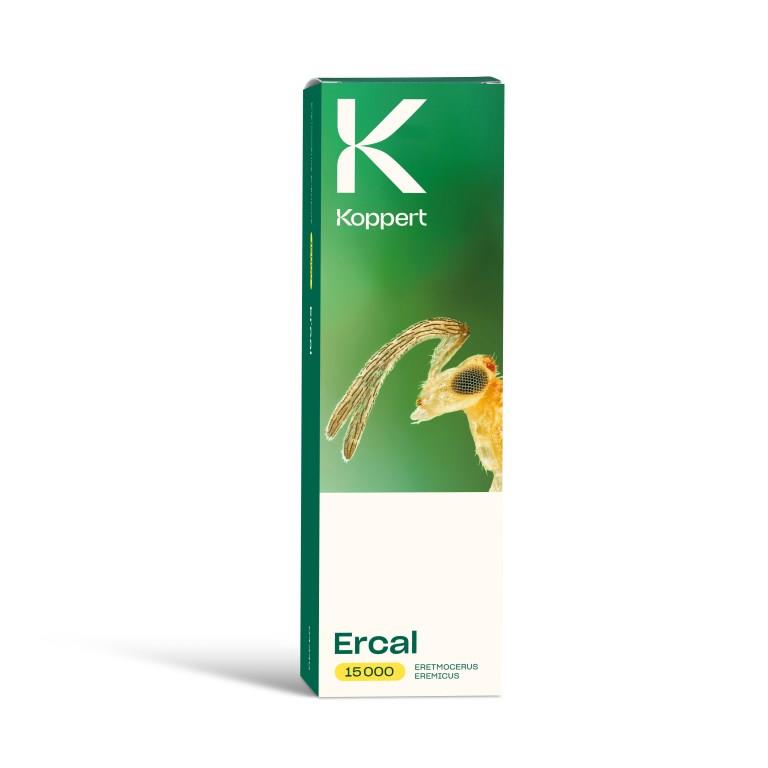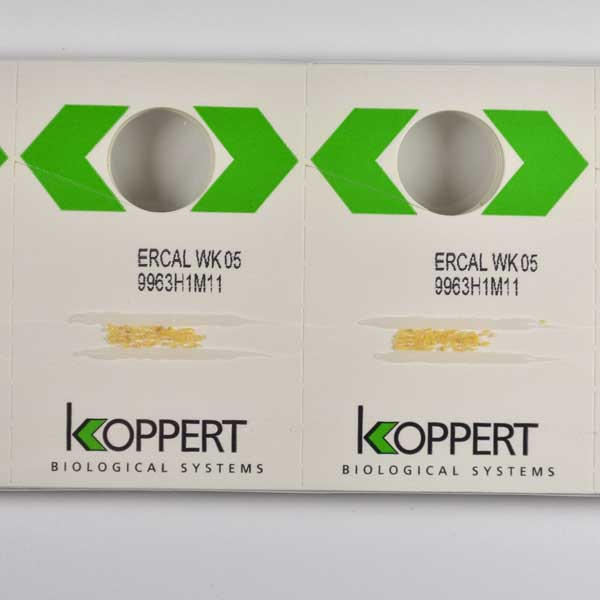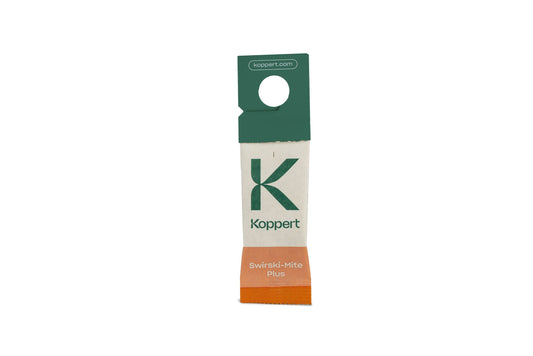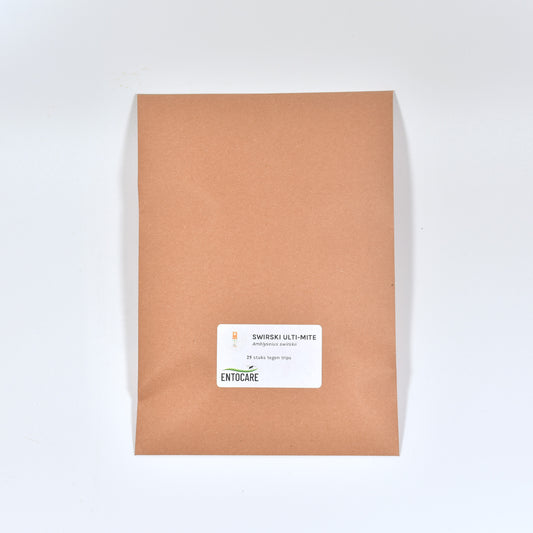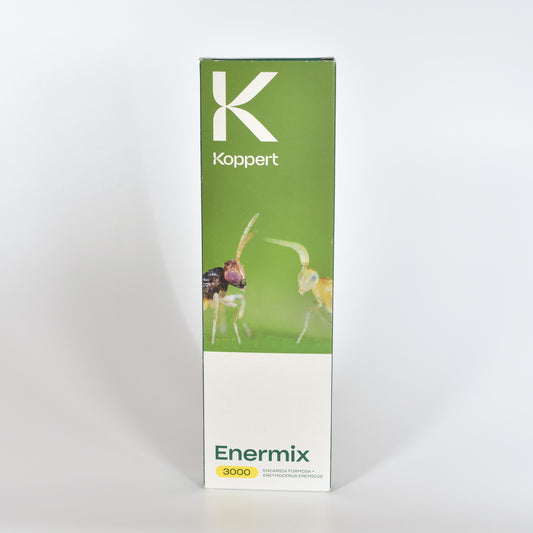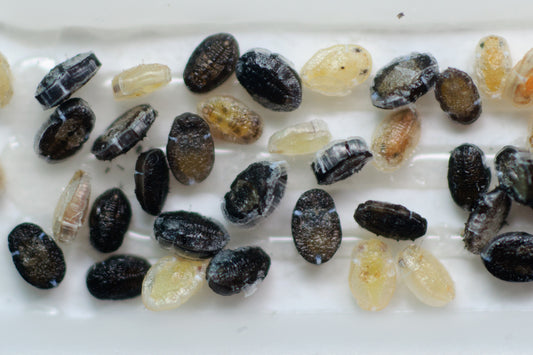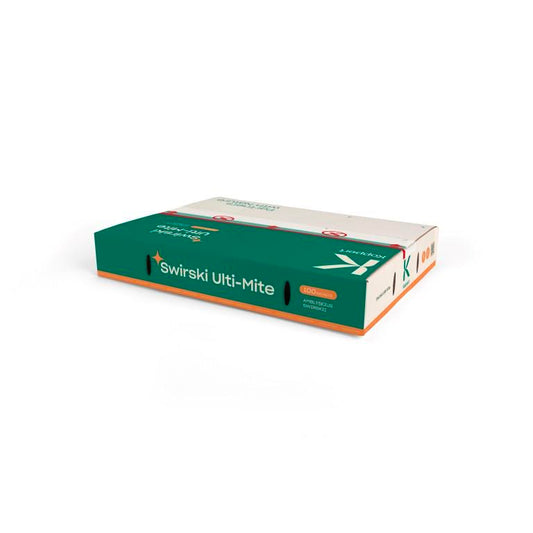Koppert
ERCAL - 15.000
ERCAL - 15.000
against whitefly
ERCAL is a parasitoid for the biological control of greenhouse- and tobacco whitefly. The product is especially applicable in greenhouses, because the wasp has a preference for high temperatures. The pupae of the parasitoid are available per 10 strips (50 cards) or 50 strips (250 cards) for business customers. As soon as the paraistoids emerge from the pupae, they will look for a host.
Specificaties
Specificaties

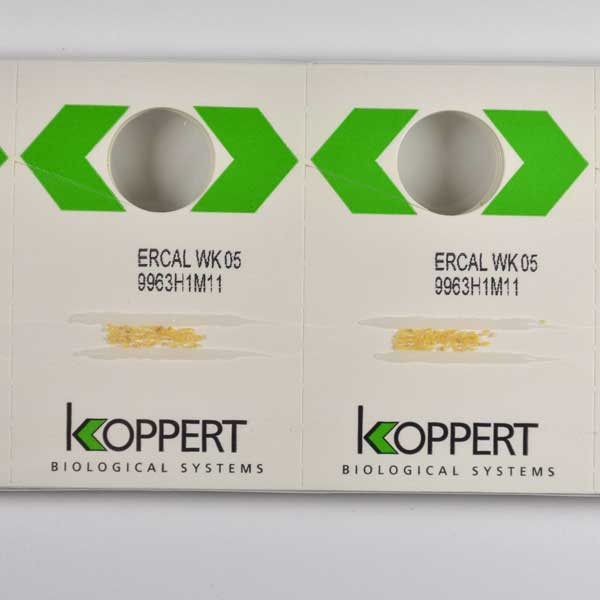
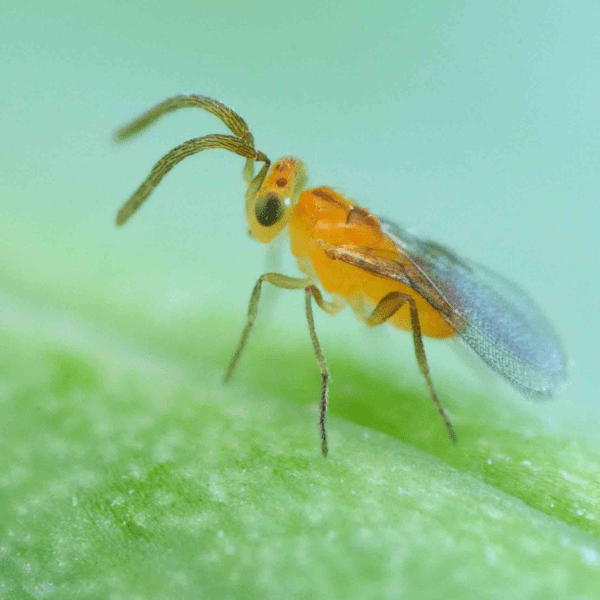
What is ERCAL?
ERCAL contains the small yellow parasitoid Eretmocerus eremicus that can be used for the biological control of whitefly. The parasitoid has a slight preference for tobacco whitefly; but will also parasitize greenhouse whitefly.
How does ERCAL work?
Eretmocerus parasitizes the bigger whitefly larvae. The first parasitized whitefly pupae are visible two to three weeks after release of the wasps. Pupae of both whitefly species turn yellow when parasitized. The smaller larvae of the whitefly are used as a source of food for the parasitoids. This is also known as host feeding. They puncture the larvae and suck up the contents. The shells of the dead larvae and pupae remain on the underside of the leaves. Host feeding itself contributes strongly to the control of the pest. ERCAL is more effective against tobacco whitefly than EN-STRIP; especially at high temperatures. Another advantage of ERCAL is that it is less sensitive to pesticides than EN-STRIP.
How to combine ERCAL
ERCAL is great in combination with the product MIRICAL. This product consists of predatory bugs which can be released into the crop even before the pest is present. They puncture the whitefly larvae and suck out the content.
![]()
March - September
![]()
T = 20 - 35/40°C
![]()
RH = 50 - 80%
![]()
vegetable production, ornamental production
- Preventative: 2-3 per m²
- Mild infestation: 3-6 per m²
- Heavy infestation: 6-10 per m²
- Repeat every week,4-5 times until the infestation is under control.
- Open the package in the greenhouse.
- Distribute the cards over the infested plants: 50-70 cm under the top of the plants.
- Do not touch the pupae.
- Keep from direct sunlight.
- Within several days the pupae will hatch and start to parasitize whiteflies.
-
SWIRSKI-MITE PLUS - 25
Regular price €23,35 EURRegular priceUnit price / per€0,00 EURSale price €23,35 EUR -
SWIRSKI ULTI-MITE - 25
Regular price €30,10 EURRegular priceUnit price / per€0,00 EURSale price €30,10 EUR -
ENERMIX - 3000
-
SWIRSKI ULTI-MITE - 100

